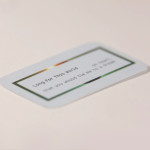Joyce Hatto: Love, Madness and Revenge
The challenge was to reflect on fakery, my particular focus being the human element to stories involving deception – there is always a deeper reason why the protagonists carry out their deed.
The story I chose was that of Joyce Hatto, the classical pianist whose recordings from an unusually late career surge turned out to be fake, with her husband and producer, William Barrington-Coupe seemingly knee-deep in the affair. Hatto died before the controversy erupted and Barrington-Coupe has been the only source of information regarding the hoax, his a consistently inconsistent testimony to the affair. From my research, I discovered a story rooted in human sentiment and emotion, culminating towards an expression of what I perceived to be the three main motives behind the fraud:
Love, Barrington-Coupe’s love for his wife, believing that she deserved a ‘great end to a career’;
Madness, the ‘butterfly mind’ of Hatto, her unwillingness to let go of the past, her ambiguous departure from the performance circuit, and Barrington-Coupe’s subsequent contradictory denials and confessions to those interested in the story;
Revenge, against a critical establishment that derided many of Hatto’s performances, ignoring many recordings which her husband had produced, and the concoction and successfully executed hoax, leaving many critics with egg on their faces.
This first film (Love, top of page) began with a poem I wrote responding to the love Barrington-Coupe had for his wife and the lengths he was willing to go to make her happy. The form was directly inspired by the ‘tone poem’ form from the Romantic era of music, taking a more literal approach in regard to colour tone and atmosphere. The music I selected was Liebestraum by Franz Liszt, literally translated as ‘dream of love’, bringing an expressive yet grounded feel to the film.
The second film (Madness, above) was based upon the inconsistency of Barrington-Coupe’s testimony and the ‘butterfly mind’ of Hatto. I expressed this through the use of mesostic poetry, utilized by John Cage, with one vertical stream reading Barrington-Coupe and another horizontal stream reading Hatto. I compiled Barrington-Coupe’s statements into a contradictory stream of consciousness and wrote Hatto’s words as a response to his, referring to other accounts in my research as well. In addition, I used musical notation to convey a sense of foreboding, removing its ‘dainty’ quality and imposing it on the viewer. The music adds to the discomfort of the piece, Alfred Schnittke’s maddening Cadenza climaxing at a sudden end.
My final film (Revenge, above) divided itself between the pre-hoax and post-hoax Hatto, using adjectives from reviews to show, first a building frustration due to an unrelenting foe, then second an undulating praise from the same source, culminating in a tranquil contentedness. The form was inspired by the divisions in the narrative, using alternating and strobing words in accompaniment to the frantic Rachmaninov soundtrack. At the seam between the two sides, the mood changes and another prelude gently lulls the pace down to its end with the typography affected, growing softer and lighter.



